2022 in review
Protecting internally displaced people worldwide with support from NorwaySix examples of how UNHCR – with support from Norway – helps internally displaced people around the world.
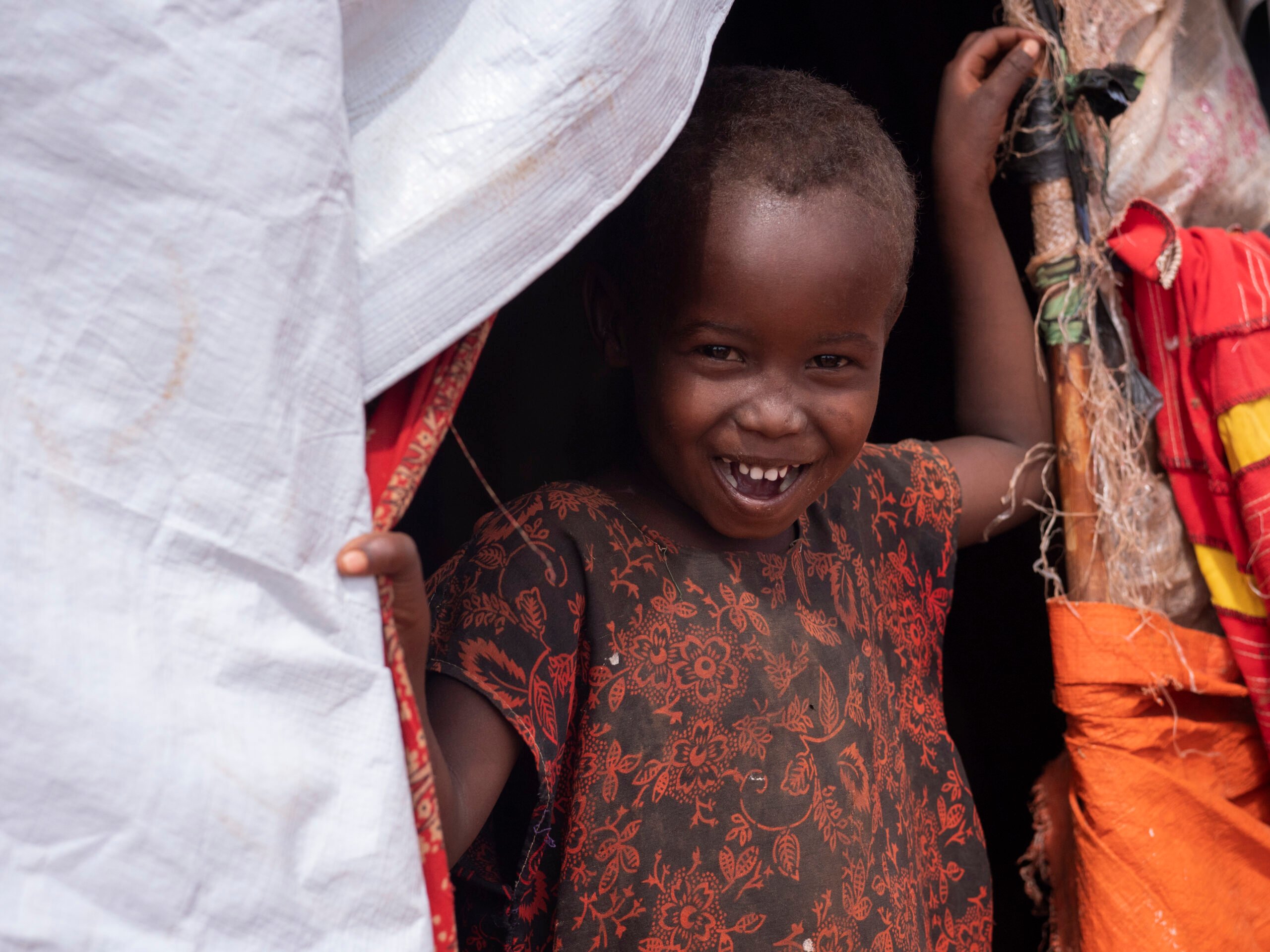
Somalia. Dire needs for internally displaced as deadly drought continues.
2022 in review
Protecting internally displaced people worldwide with support from NorwaySix examples of how UNHCR – with support from Norway – helps internally displaced people around the world.
Somalia. Dire needs for internally displaced as deadly drought continues
More than 100 million people are forcibly displaced around the world today. UNHCR, the UN Refugee Agency, relies on support from donors to protect them and respond to their diverse and increasing needs.
Norway is one of UNHCR’s biggest donors and its support has enabled us to have an inclusive response at the onset of a refugee crisis, and to continue a sustainable response if it becomes protracted. Norway is also one of the strongest donors of unearmarked contributions, which allows UNHCR to respond swiftly in erupting emergencies, and to provide lasting support in the many overlooked and forgotten crises across the world. This unearmarked funding is especially important in ensuring that UNHCR can maintain and scale up its responses to growing and diverse needs of forcibly displaced people.
Internally displaced people – people who flee their homes but remain within the borders of their country of origin – form more than half of the world’s forcibly displaced, with the figure standing at 53.2 million at the end of 2021. 45 percent of those are children, who are particularly vulnerable in displacement contexts. Support from countries like Norway allows UNHCR to respond to their immediate protection needs and provide them with safety.
Norway’s contributions to UNHCR
million dollars contributed in 2022
%
of the contribution was unearmarked in 2022
dollars contributed per capita, making Norway the second biggest donor per capita
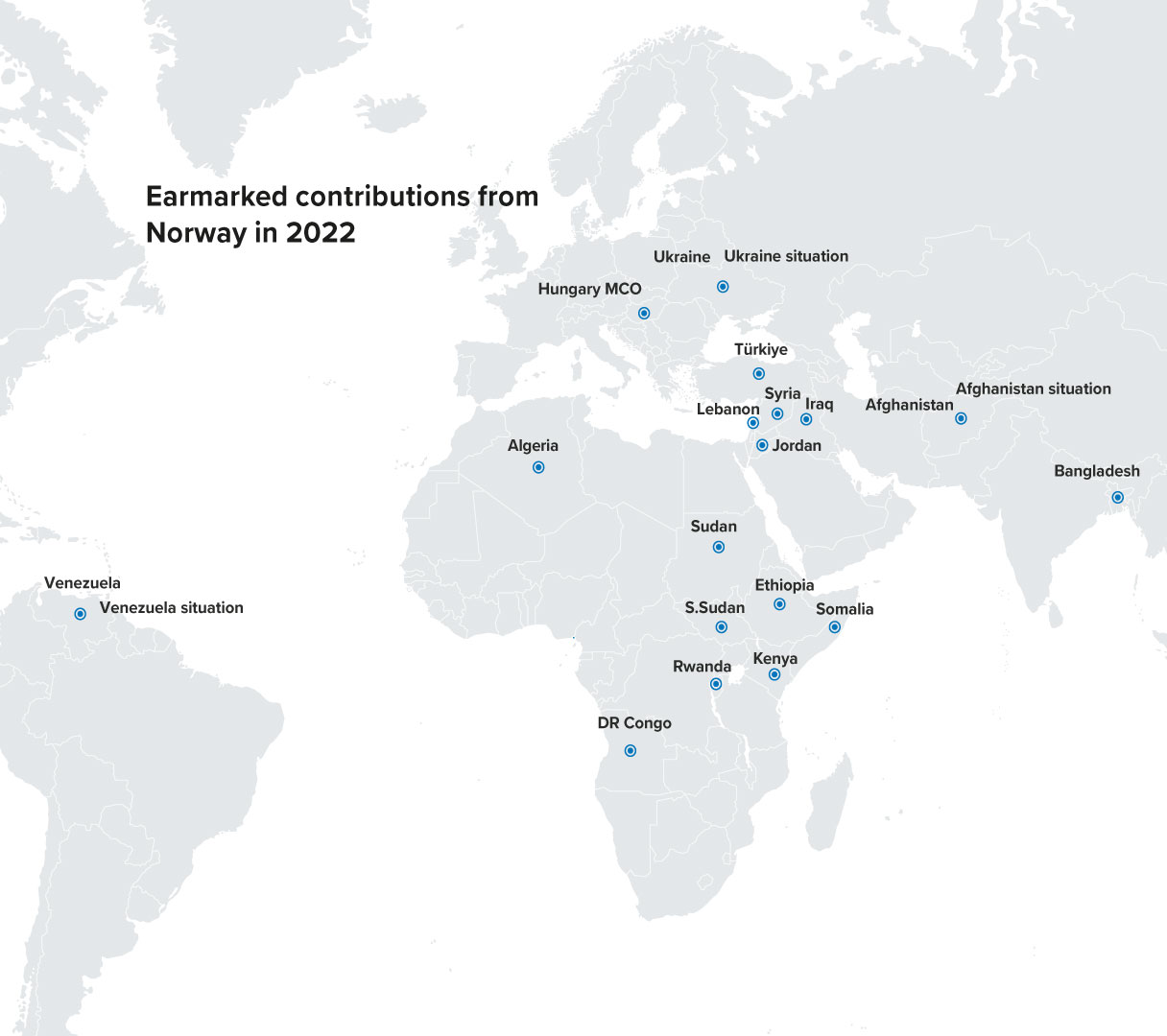
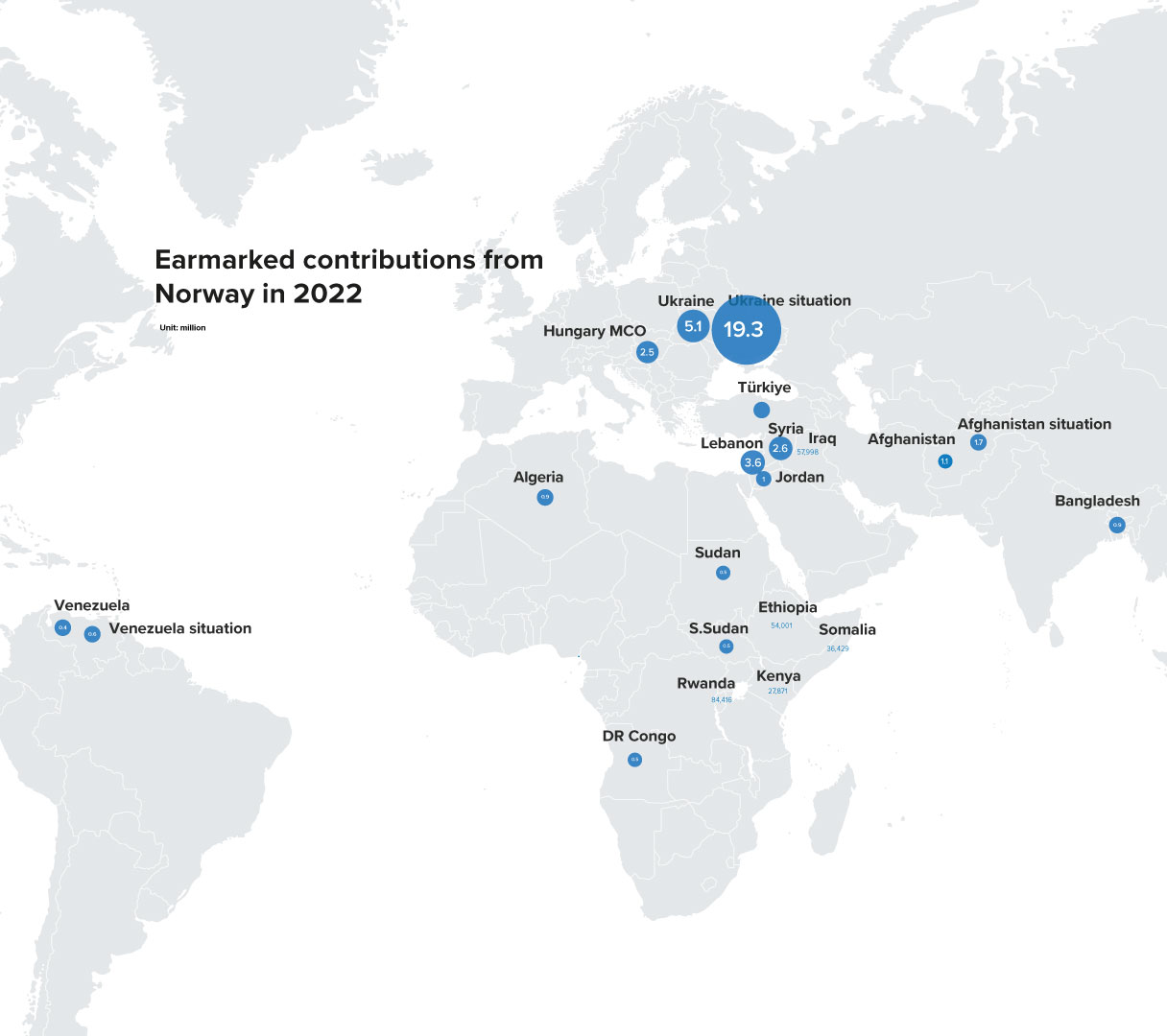
Providing shelter support in the Democratic Republic of Congo
Multiple conflicts and violence in DR Congo have caused millions to struggle to survive
million people are internally displaced in DR Congo due to conflict and recurring waves of violence
people had to flee their homes in Goma after the eruption of Mount Nyiragongo in May 2021
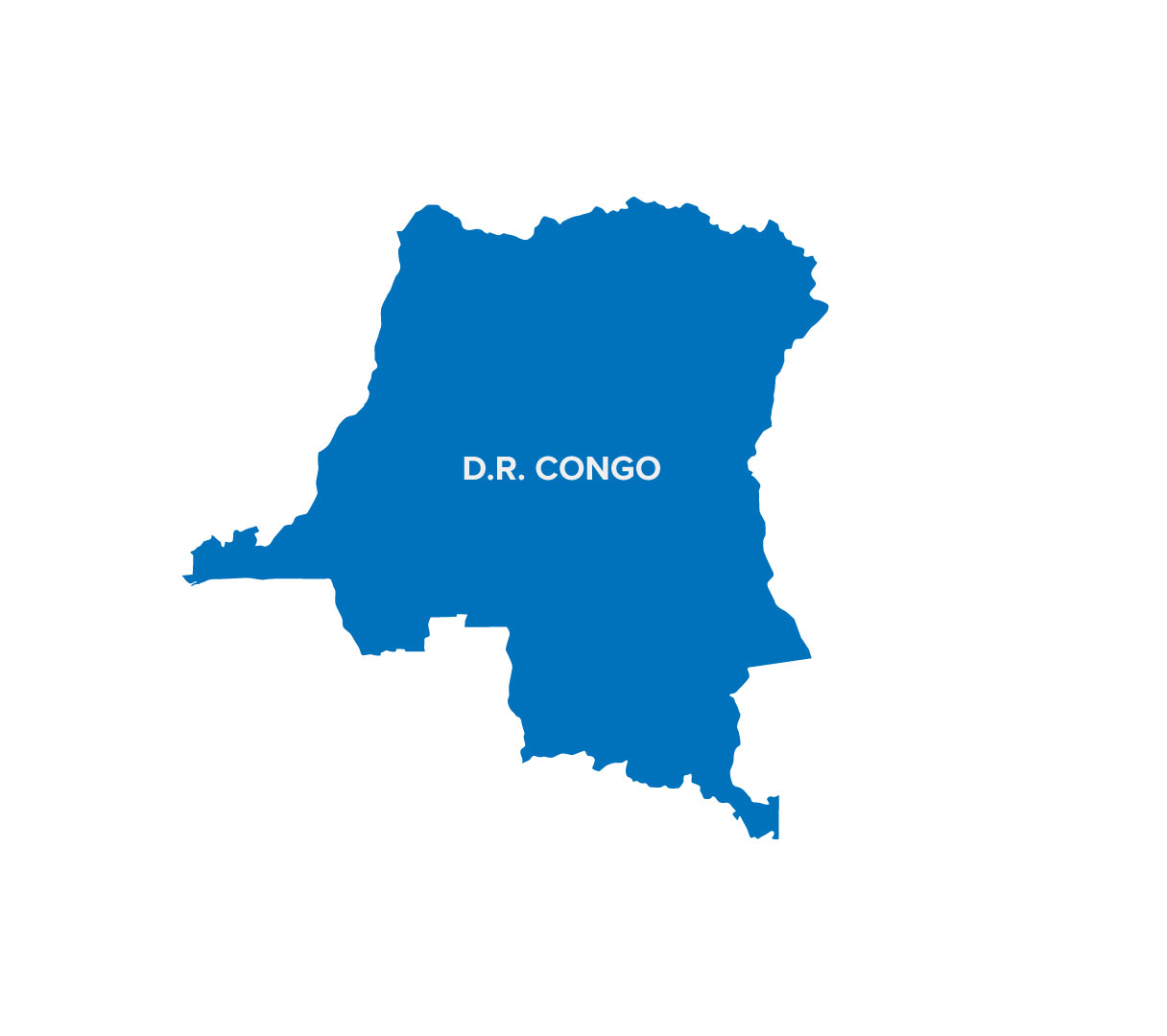
In the Democratic Republic of Congo, UNHCR is assisting internally displaced people, including women and children who face particular vulnerabilities. This includes providing legal services and facilitating access to medical and psychosocial aid for survivors of gender-based violence. UNHCR also provides cash assistance to the most vulnerable among the displaced and returnees, and distributes aid to households such as blankets, sleeping mats, soap and jerry cans.
UNHCR is also supporting the internally displaced people who are able to return to their homes – this includes skill and technical training to help facilitate livelihoods, by for example improving the yields of their farming fields and generate better incomes.
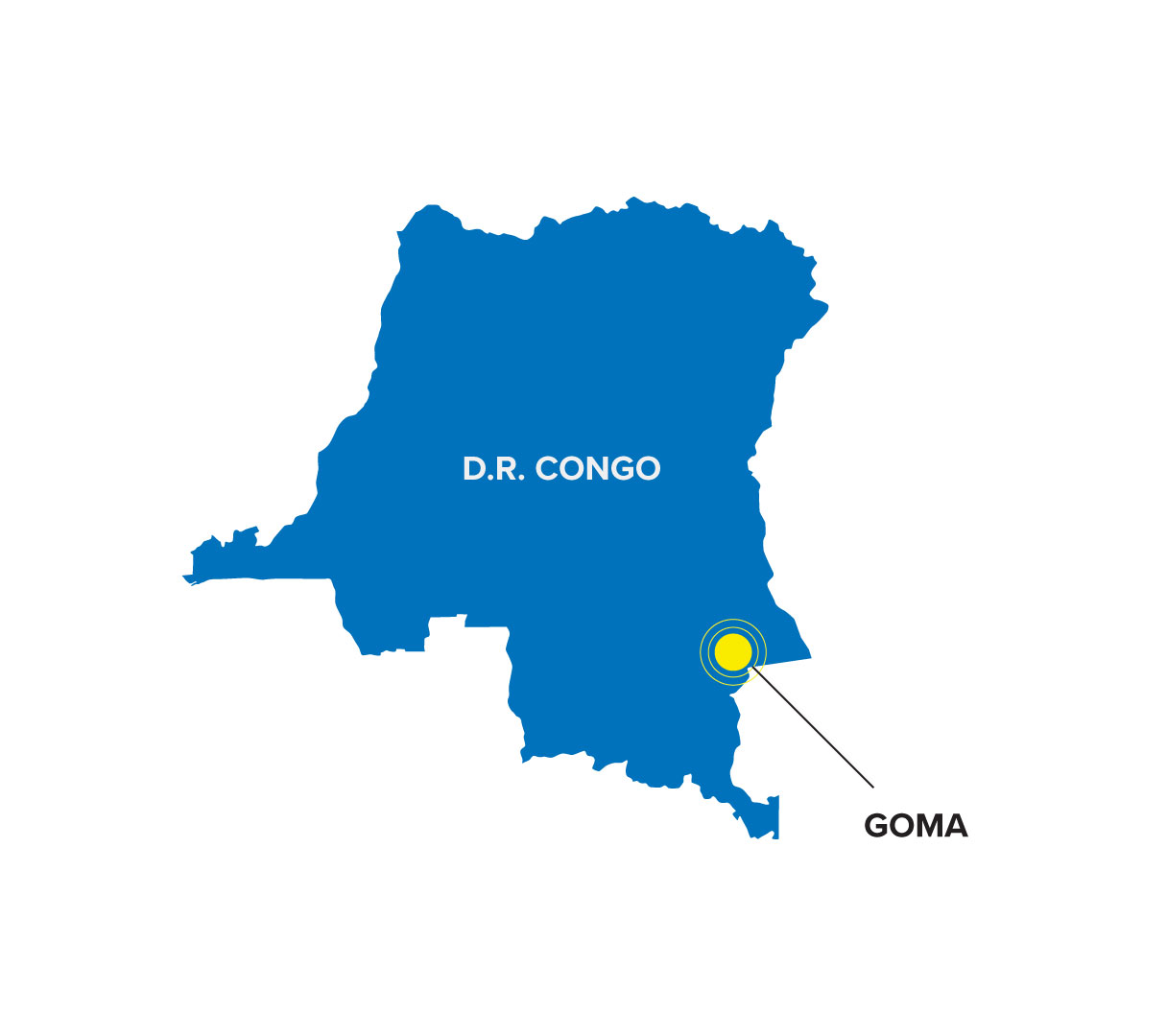
Following the eruption of Mount Nyiragongo in 2021, UNHCR helped move over 2,000 displaced families who could not return to their homes in Goma, from interim shelters at schools to sustainable housing. Other families were provided cash assistance for rent so that they could leave crowded conditions and find safer accommodation.
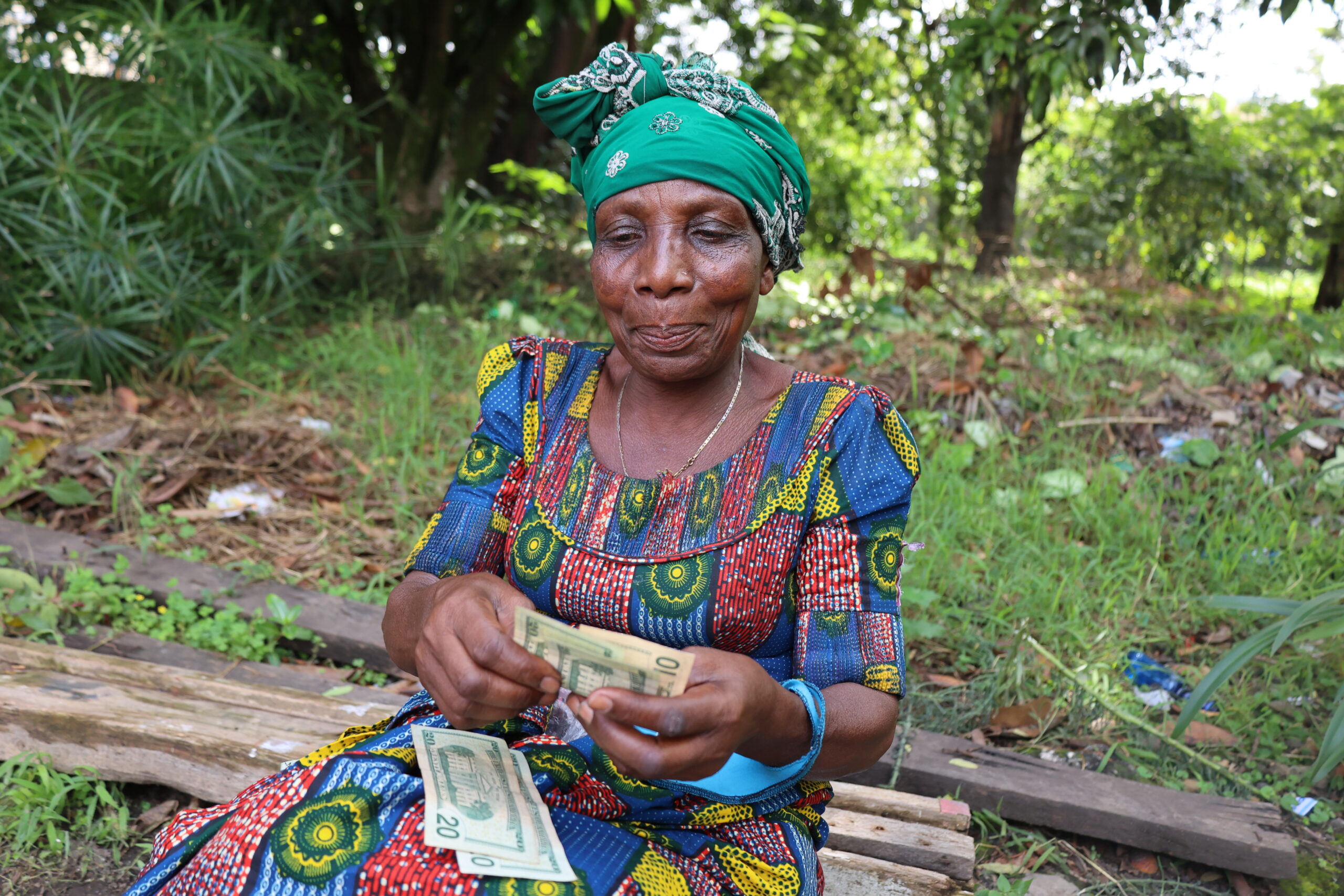
Batera Kabanza, a sixty-year-old widow responsible for seven children, was one of the people who benefitted from UNHCR’s cash assistance which meant she could pay for rent for at least six months for herself and her family.
Providing shelter and cash support in Yemen
After more than six years of conflict, Yemen remains one of the world’s largest humanitarian crisis, and conditions for the many internally displaced only grow worse
million people are internally displaced in Yemen
%
all internally displaced people in Yemen live in informal displacement sites where access to basic services is largely inadequate or even non-existent
%
of all Yemenis live below the poverty line
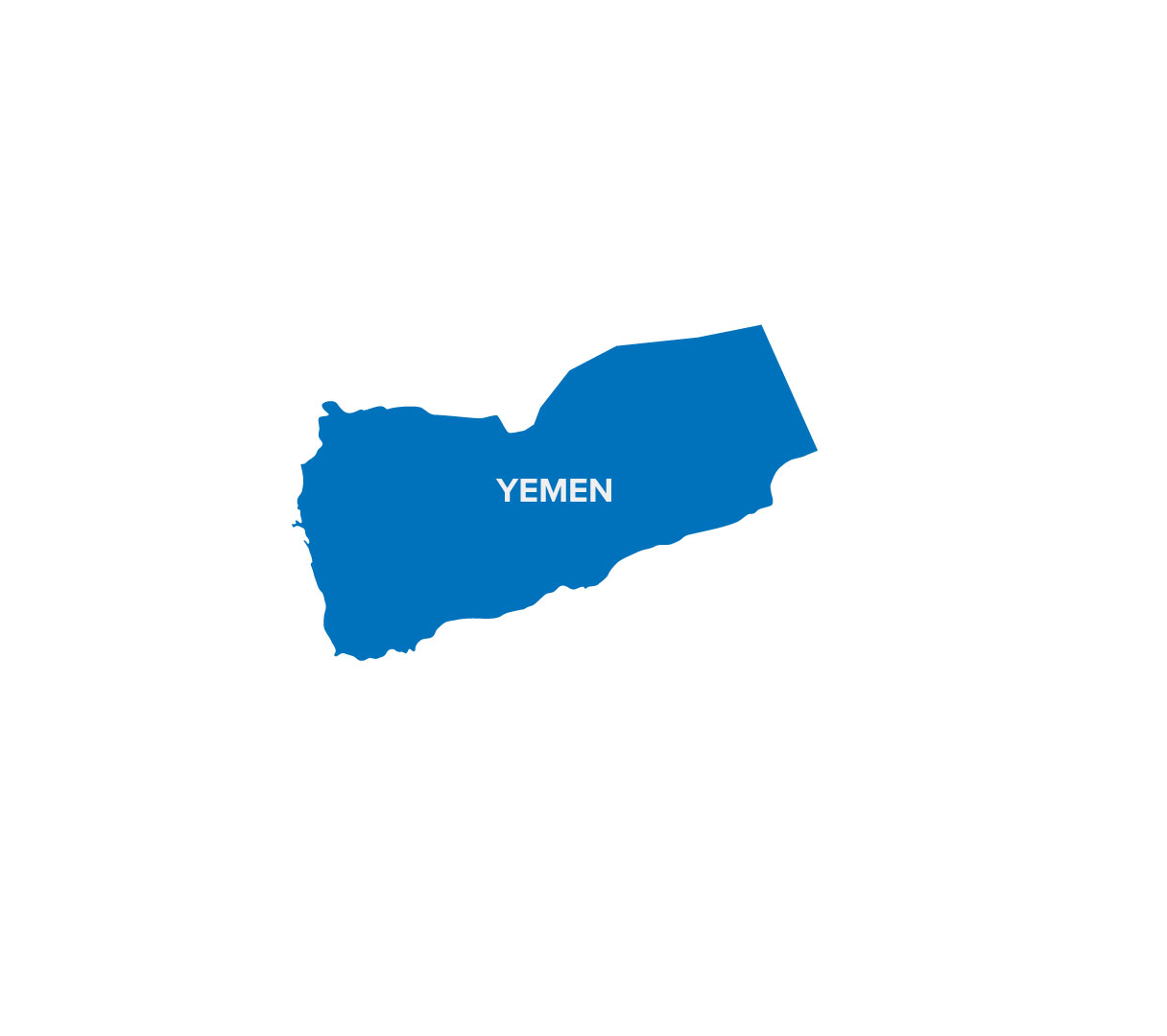
One of the ways UNHCR assists vulnerable displaced Yemeni and refugee families to meet their most basic and pressing needs is by distributing multi-purpose cash assistance, rental subsidies, and emergency and winter cash. Families can access basic items and services with this money, and decide for themselves how to spend it in the best way to meet their needs.
In addition, UNHCR distributes shelter kits, mats and plastic sheets that help families repair their homes, which have been damaged in the conflict, and provide some privacy and protection to those living in collective buildings.

During the conflict in Yemen, the lives of Muhammad, aged 52, his wife, twelve children and grandchild were severely affected. Five years ago, he had to stop working in agriculture and labouring on building sites, due to disability and illness. Around the same time, the family had to flee from their home due to the conflict. They now live in two tents in the Al-Raqqa settlement. His daughter became pregnant, but suffered from pregnancy and childbirth complications. UNHCR has provided the family with cash assistance so that they have been able to afford medical care and food.
Responding to the needs of the most vulnerable in drought-affected Somalia
Armed violence and droughts, causing crops and livestock to die and stripping people of their livelihood, have forced millions to flee
million people are internally displaced in Somalia
%
of the country faces acute food insecurity
years without a rainy season
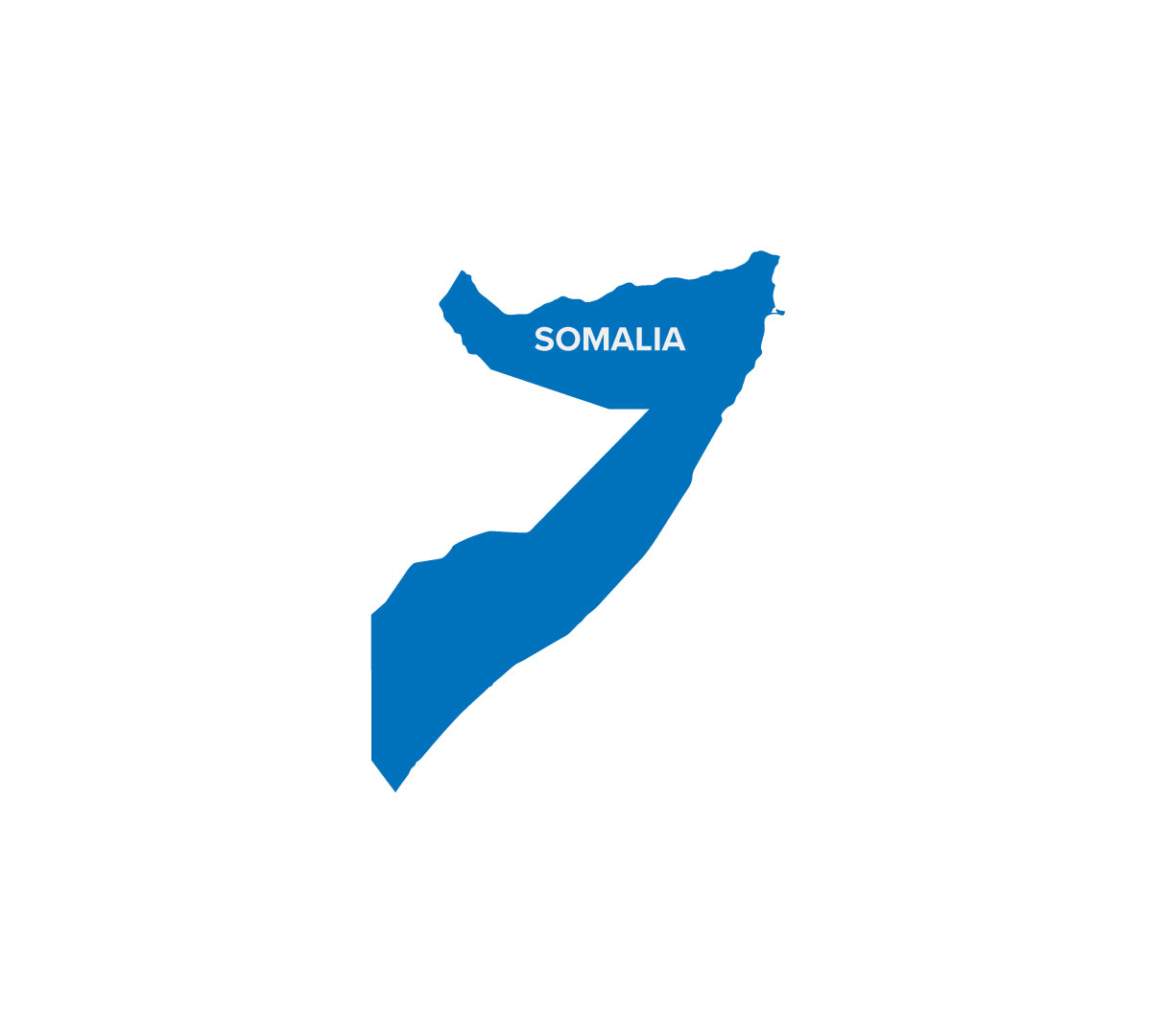
In Somalia, UNHCR is e.g. providing dignity kits, psychosocial counselling, medical and legal referrals to internally displaced people who have survived gender-based violence. In addition, through its partners, UNHCR is providing maternal and child healthcare, capacity building for school headteachers, and assists with the payment of school fees and meal allowances.
In response to the drought in Somalia, UNHCR has scaled up its protection response, a process which includes implementing gender-based violence prevention and identifying and responding to the needs of particularly vulnerable people. The agency has reached more than 188,000 people, while prioritizing drought-affected areas as well as people who are especially vulnerable, such as women, the elderly, and people with disabilities.
Approximately 146,000 internally displaced people as well as the host community have received basic household items such as kitchen sets, blankets, and jerry cans. A further 33,000 internally displaced people have benefited from shelter support, and UNHCR is also distributing cash assistance, reaching almost 70,000 people and allowing drought affected families to prioritize and address their own needs.
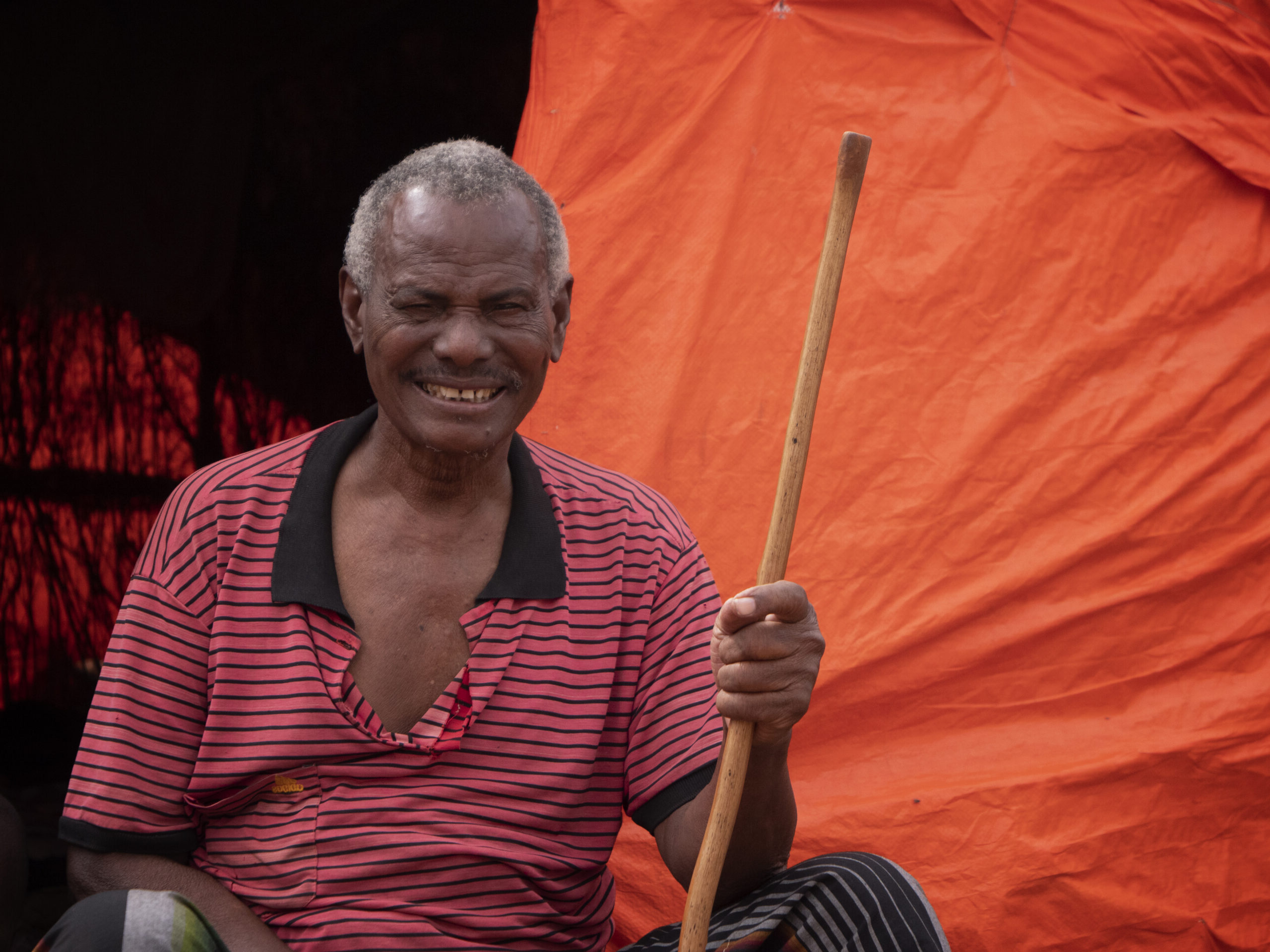
65-year-old Issak Hassan is blind and the sole caretaker to his deceased son’s three children. He had to flee violence and the drought to a camp in Baidoa for help. UNHCR provided him, and other vulnerable elderly people with emergency shelter.
Responding to educational needs in Syria
The crisis in Syria has now lasted for more than a decade. The security situation in parts of the country remains unpredictable and the economic situation is putting more pressure on the internally displaced population as they try to survive
million people are internally displaced in Syria
million people live in informal settlements and camps
%
of people in need of assistance are women and children
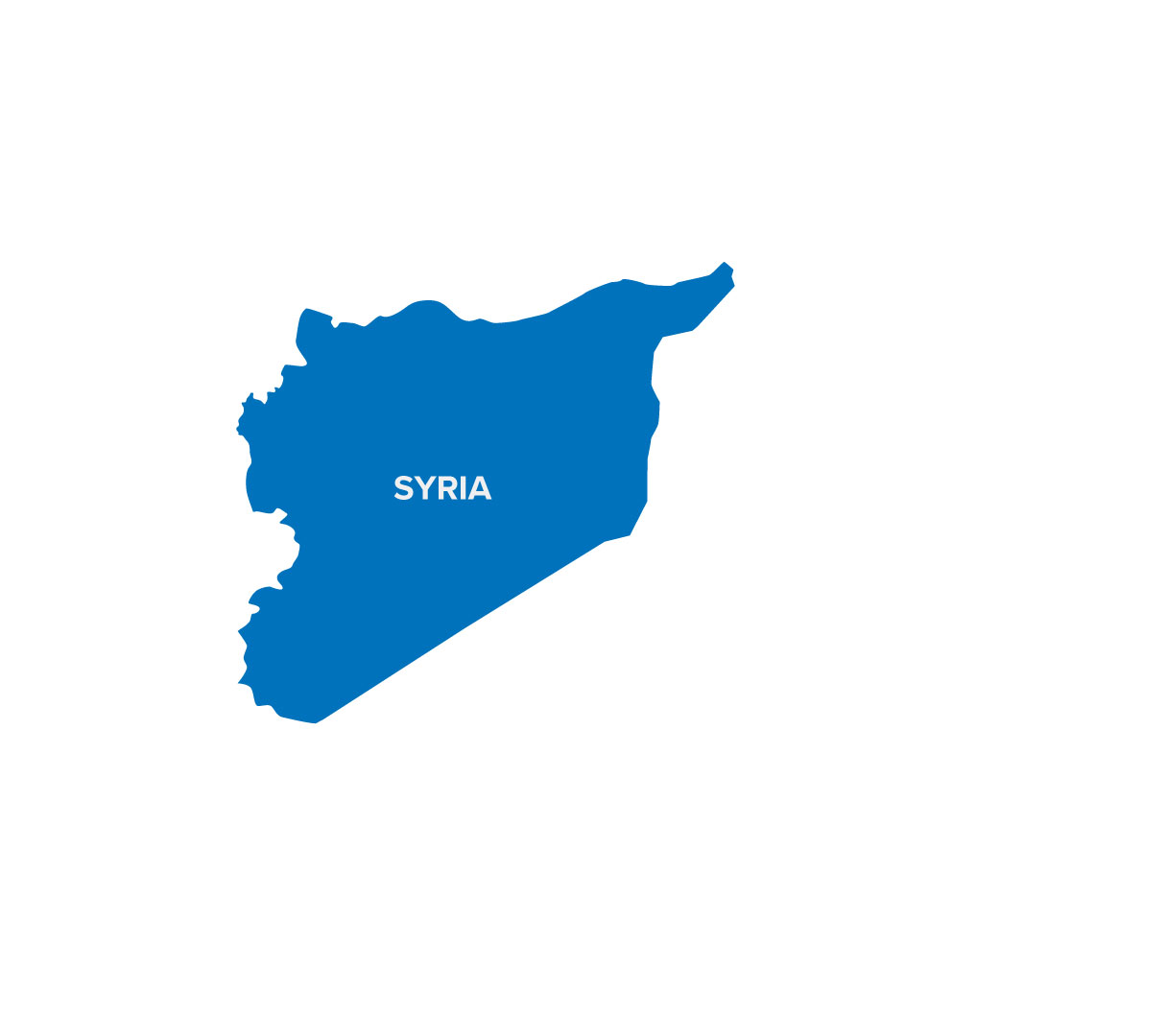
To help assist and protect the millions of internally displaced in Syria, UNHCR has distributed basic aid such as kitchen sets, blankets, and solar lamps to 90,600 families to improve the quality of their daily life. 26,500 people with specific needs, including people with disabilities, have received special assistance, including with much needed medical devices. UNHCR also supports internally displaced Syrians with in repairing damaged homes and helping people to restart their livelihoods.
Moreover, UNHCR has increased the access to safe and equitable formal education for children in Syria. As power shortages leave children in the dark and unable to study, the agency is also distributing essential equipment to female-headed households, such as solar panels, batteries, bulbs, and cables. In addition, UNHCR-supported community centres who have reached almost one million people in 2022, have for example provided catch-up classes for children and other child protection activities. UNHCR is also helping to rebuild schools so that children can access education.
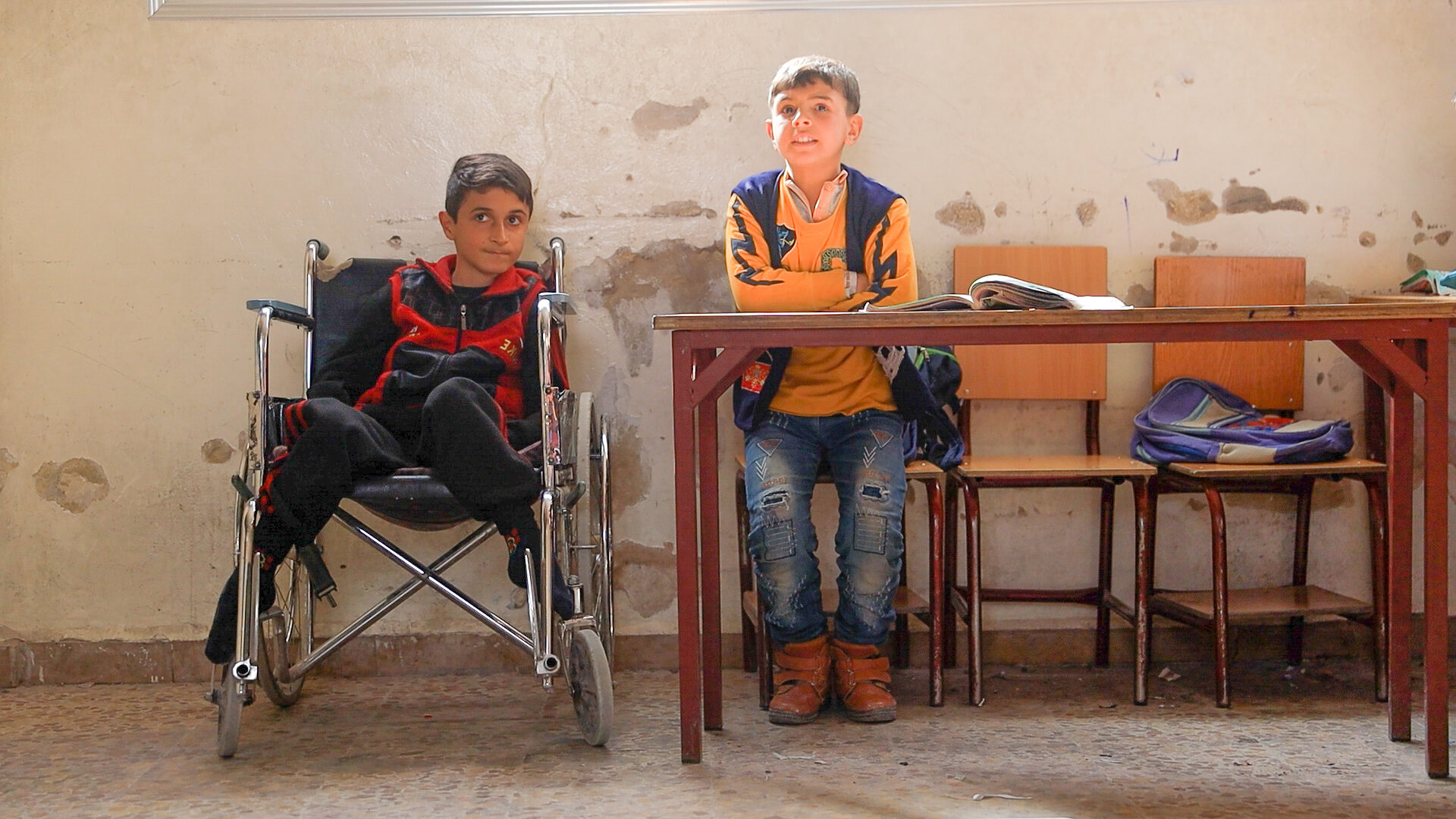
This was the case for eleven-year-old Mohammad who dreams of becoming a doctor. He was displaced with his family, and being in a wheelchair, it was impossible for him to travel to the nearest school. UNHCR repaired the school building closer to his home, allowing him and many other children to go back to school and pursue education.
Providing health services and emergency aid in Afghanistan
Natural disaster, political and economic instability and decades of conflict have plunged Afghanistan into a severe humanitarian crisis
million people are internally displaced in Afghanistan
new internal displacements were recorded in 2022
internally displaced people returned to their home in 2022
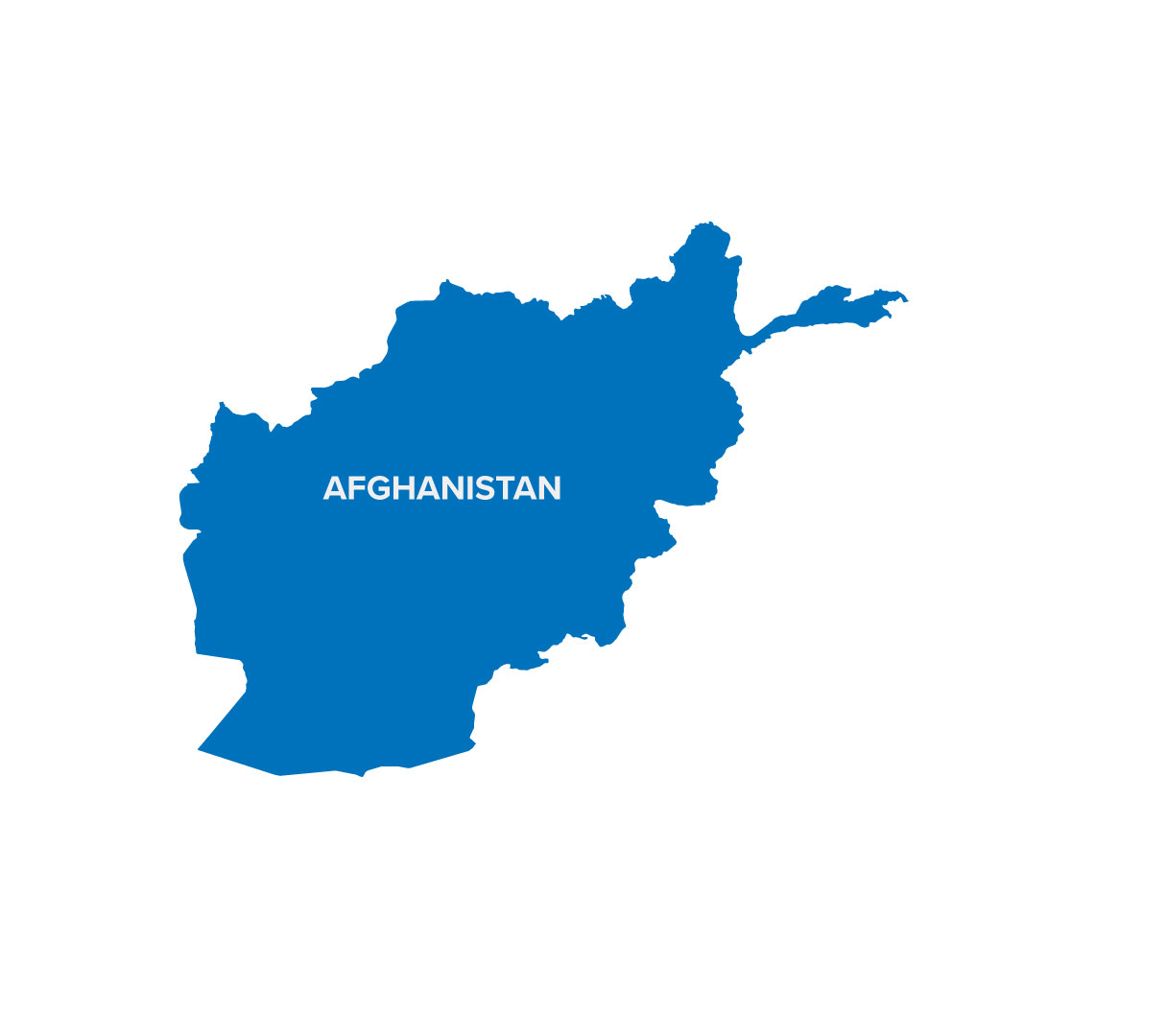
In order to respond to the diverse and complex needs of internally displaced people in Afghanistan, UNHCR has provided approximately 976,000 individuals with cash assistance so that they can prioritize their needs themselves. Access to health services was improved for hundreds of thousands of people as UNHCR helped build clinics, including maternity health facilities – and in total more than 4 .1 million people benefitted from community-based interventions.
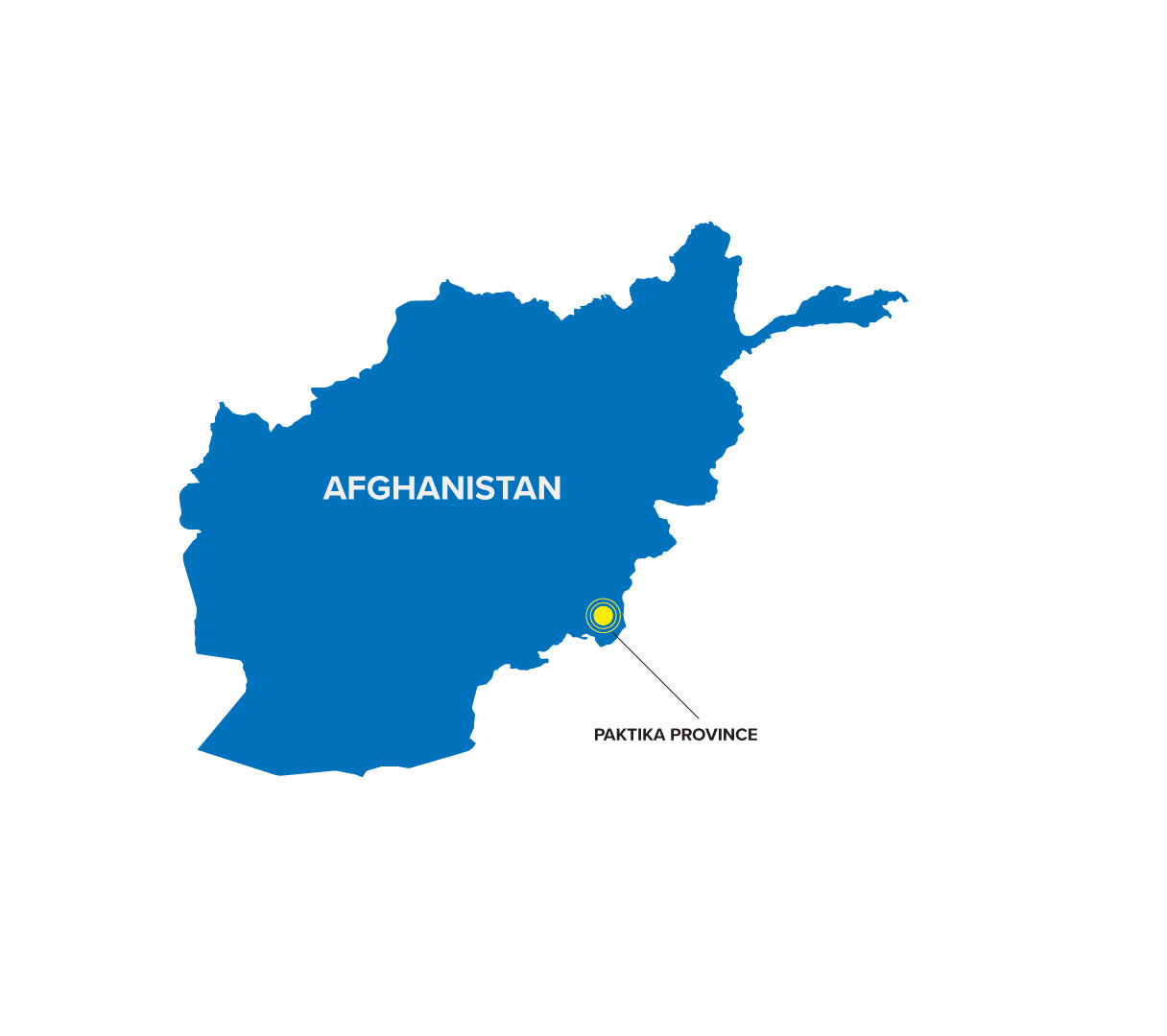
In addition, UNHCR has made sure that displaced people in the remote mountainous areas received household supplies such as tents, blankets, jerry cans for water, plastic sheeting, kitchen utensils and solar lamps. UNHCR’s so-called winterization-programme has ensured that 380,000 people have been supported with heating.
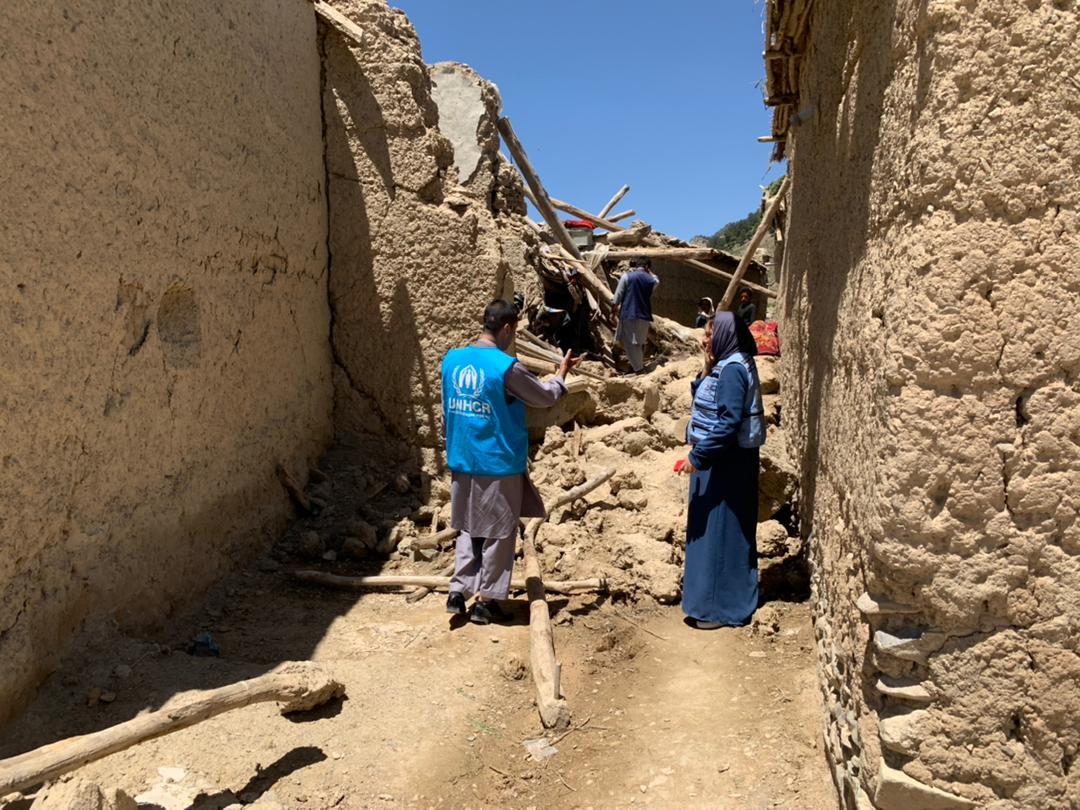
The dire situation in Afghanistan has been further exacerbated by natural disasters. In its response to the earthquake in Paktika province in June 2022, UNHCR distributed thousands of tents as well as provided dignity kits to women and girls. In addition, UNHCR is planning the construction of more than 2,000 earthquake resilient homes.
Building resilient shelters in Mozambique
Violence and extreme weather events, such as Cyclone Gombe in March 2022, have forced millions from their homes in Mozambique
million people are internally displaced in Mozambique
of these internally displaced people were forced to flee conflict
people have been affected and displaced by cyclones and extreme weather events
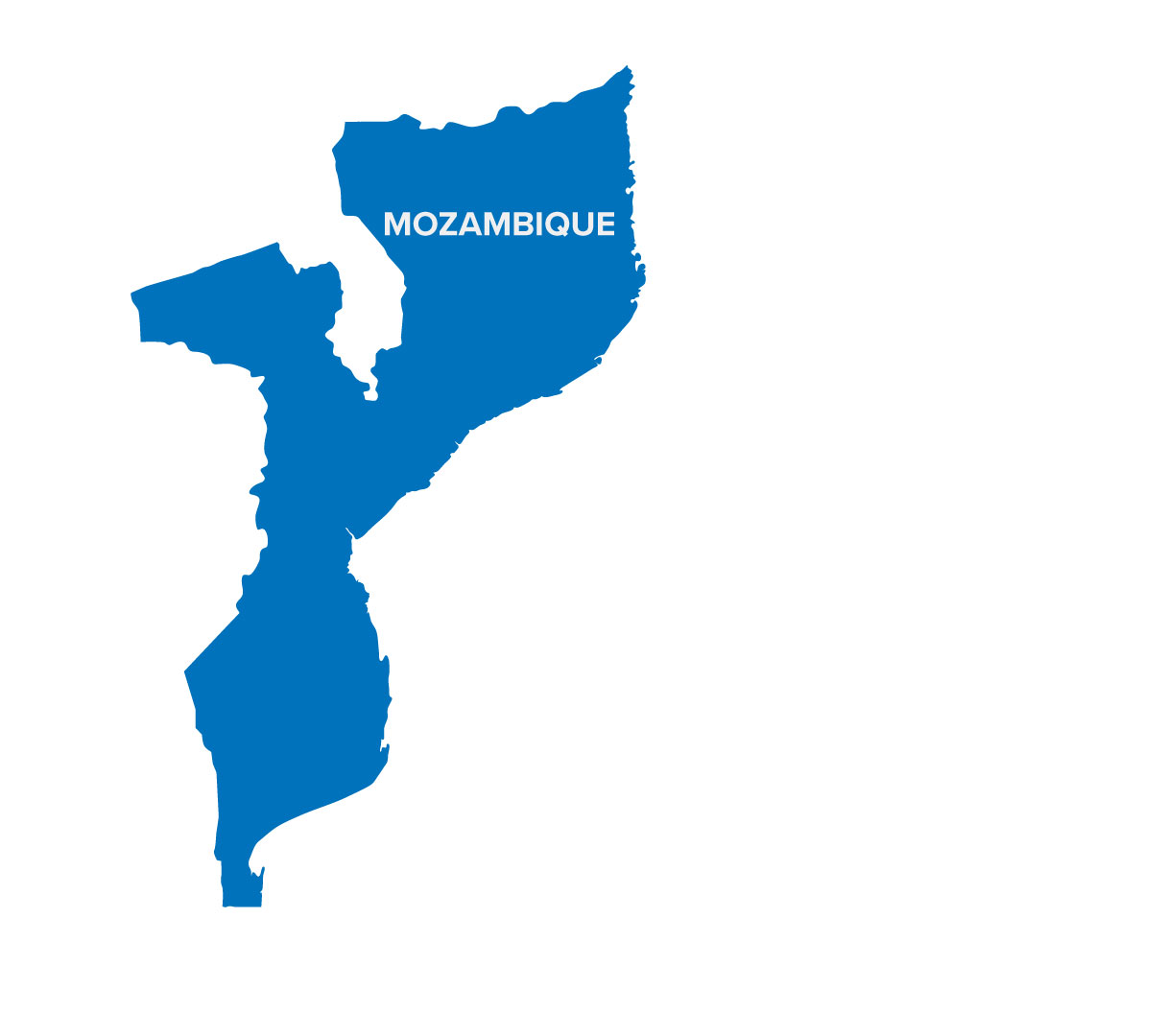
In response to the immediate needs of internally displaced people in Mozambique, UNHCR is distributing basic aid items such as blankets, sleeping mats, mosquito nets, buckets and jerry cans to families. UNHCR also provides psychosocial counselling, and more than 118,000 people now have access to gender-based violence services.
Furthermore, as violence and in particular weather events, such as Cyclone Gombe have destroyed homes and forced people to flee, UNHCR is providing shelters and is building more shelters, particularly for vulnerable families. As the country is amongst the worst affected by extreme weather conditions, the shelters are more resilient and made with local materials and techniques, thus contributing to the local economy and reducing the environmental footprint.
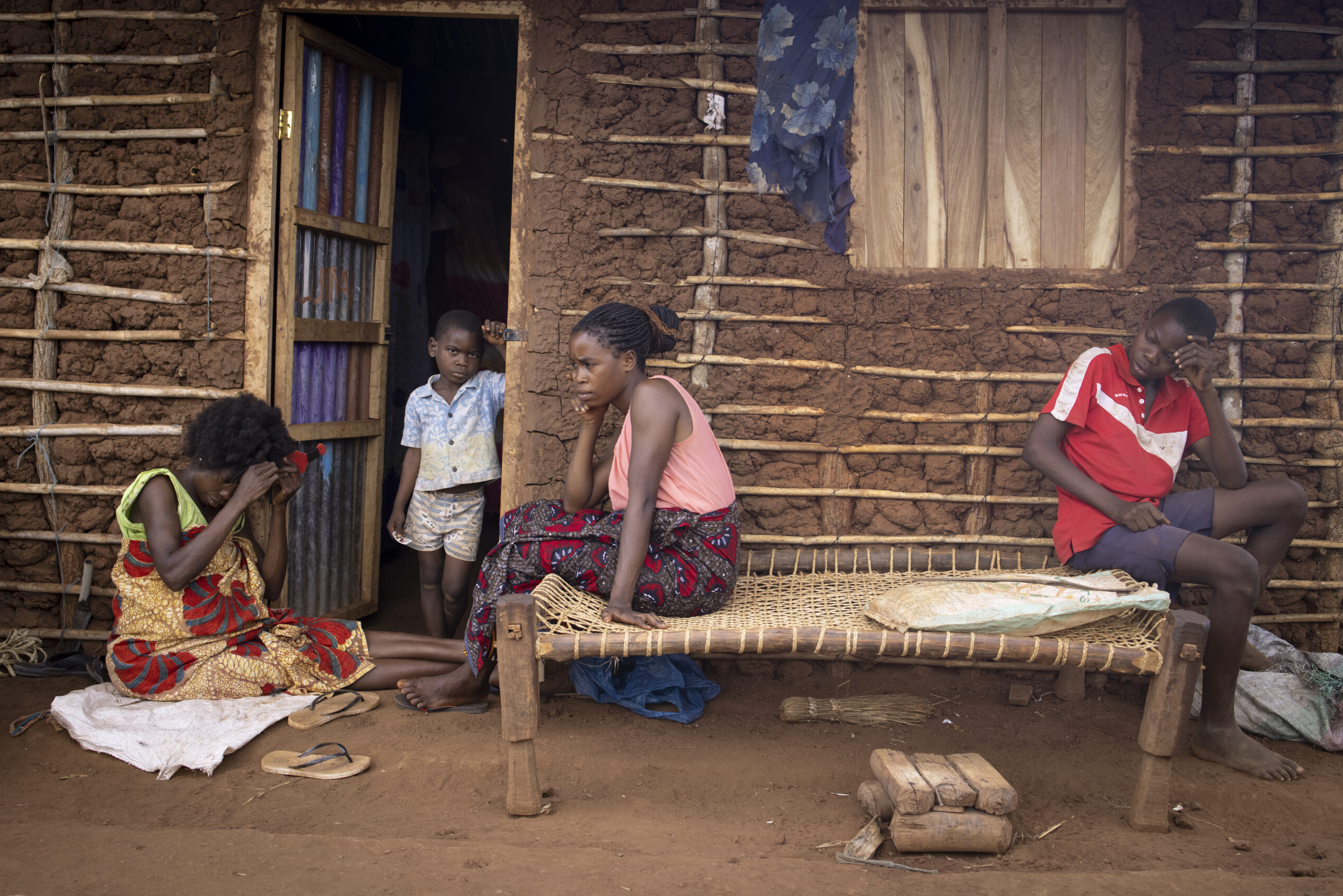
UNHCR is also providing shelter kits so that displaced people can construct their own accommodation and live in safety and in dignity.
